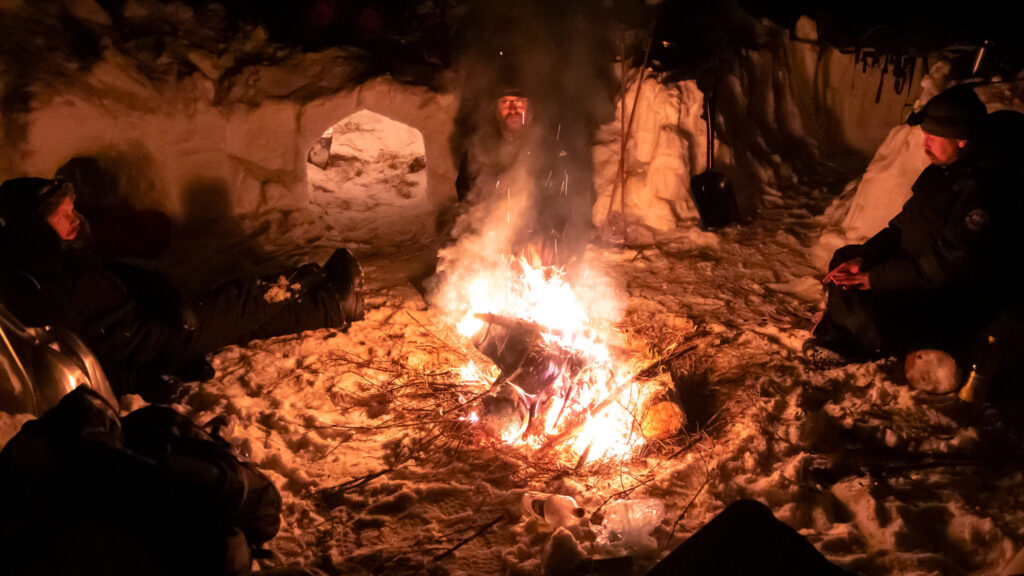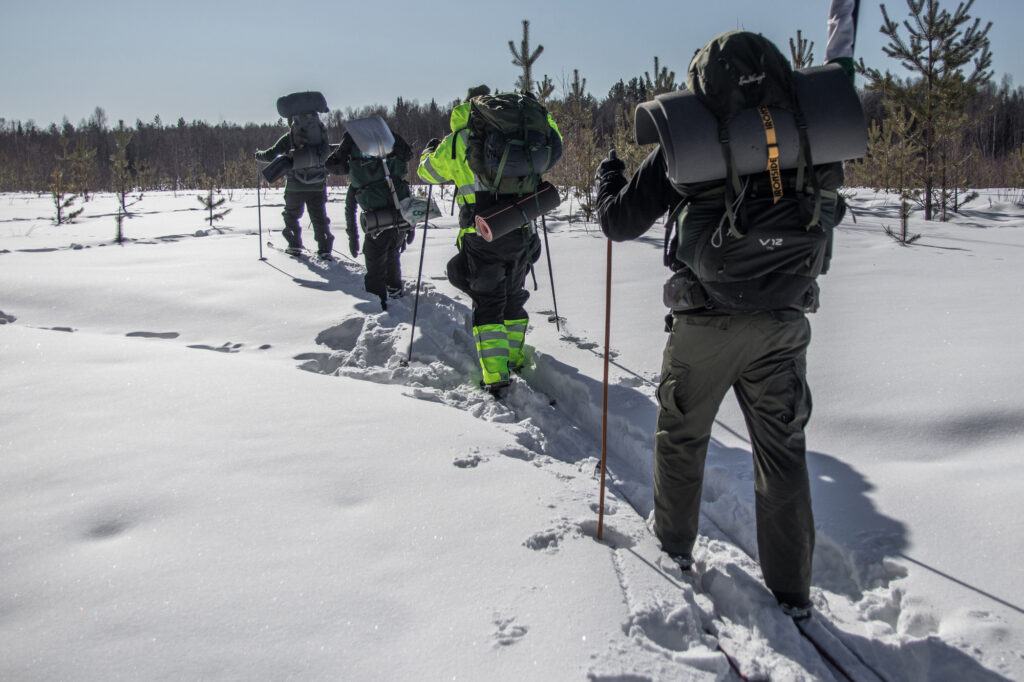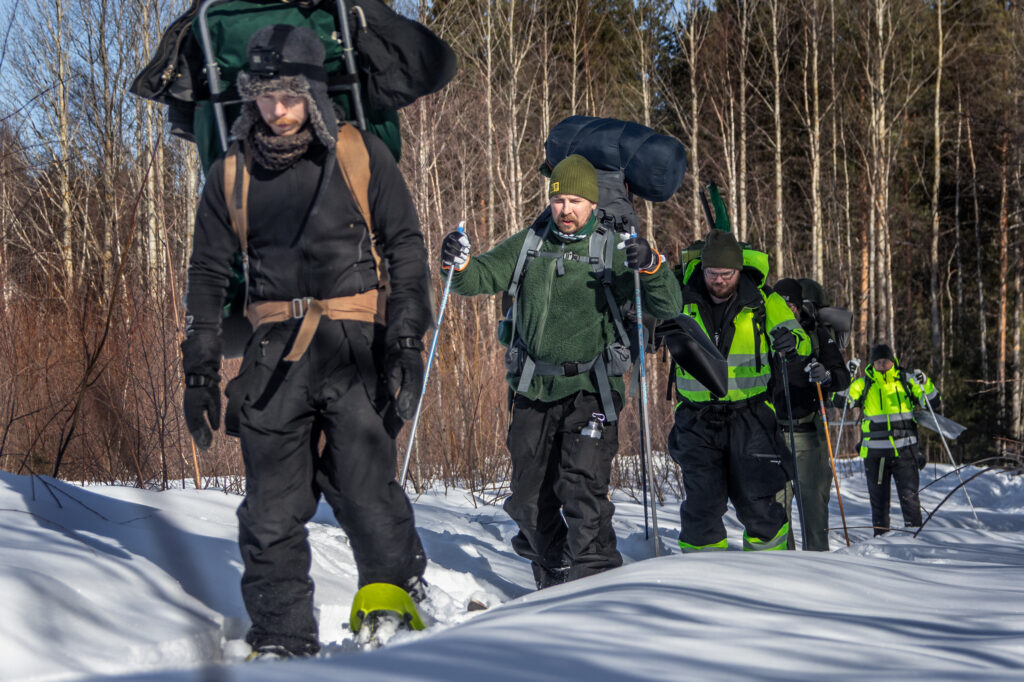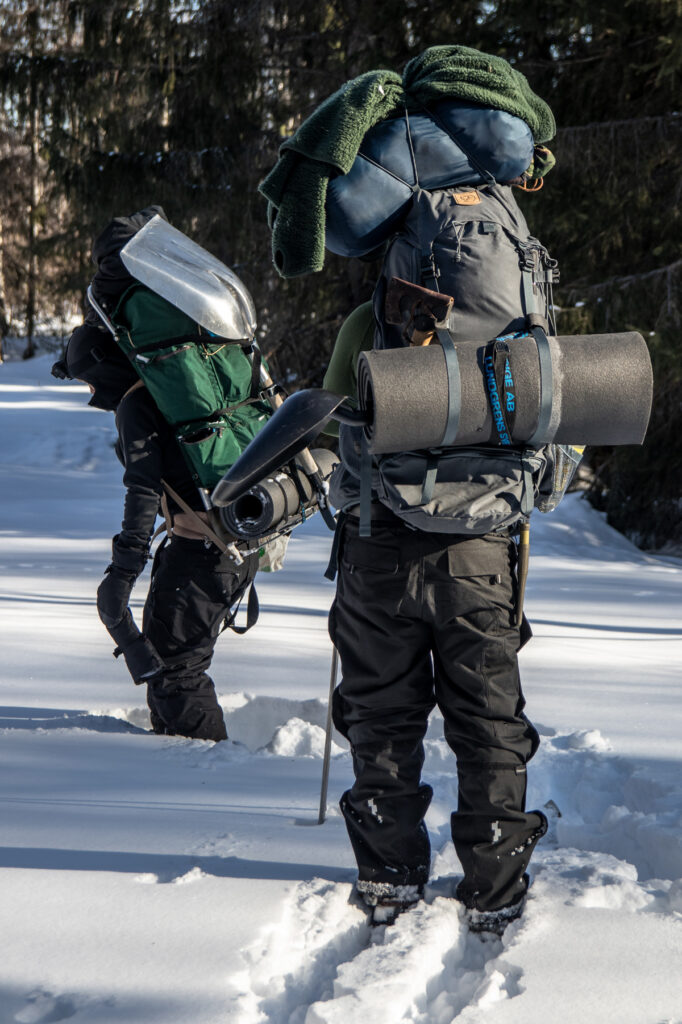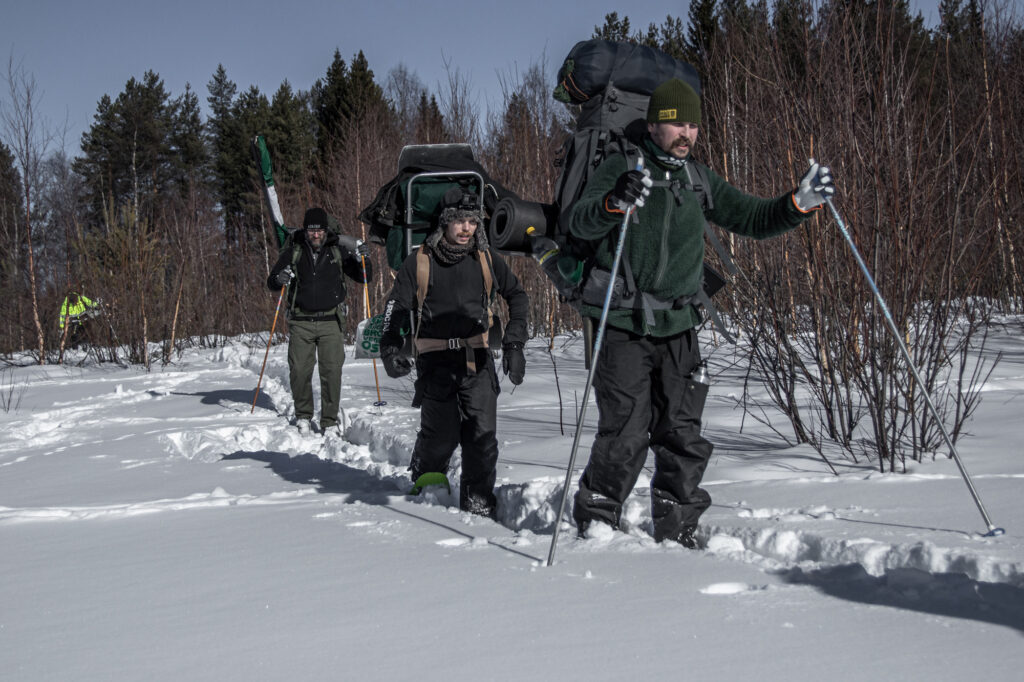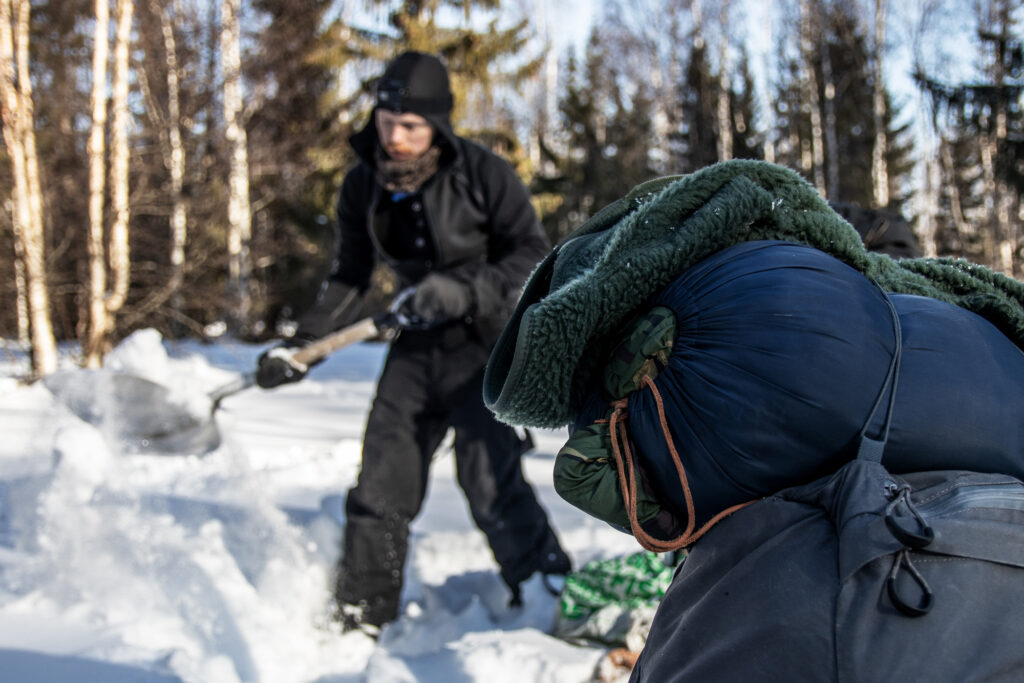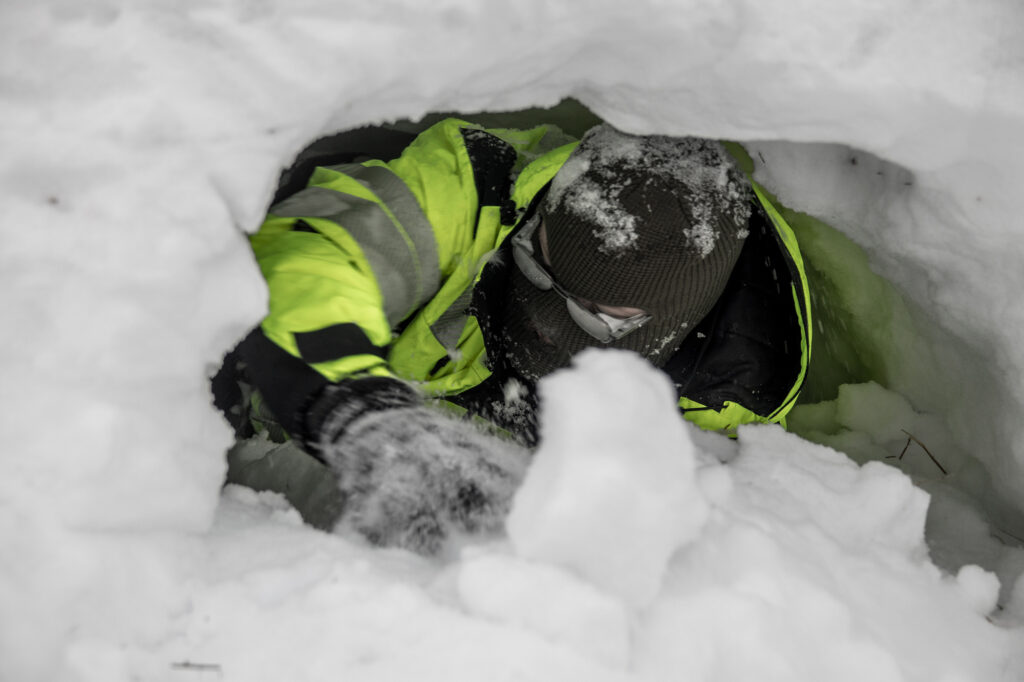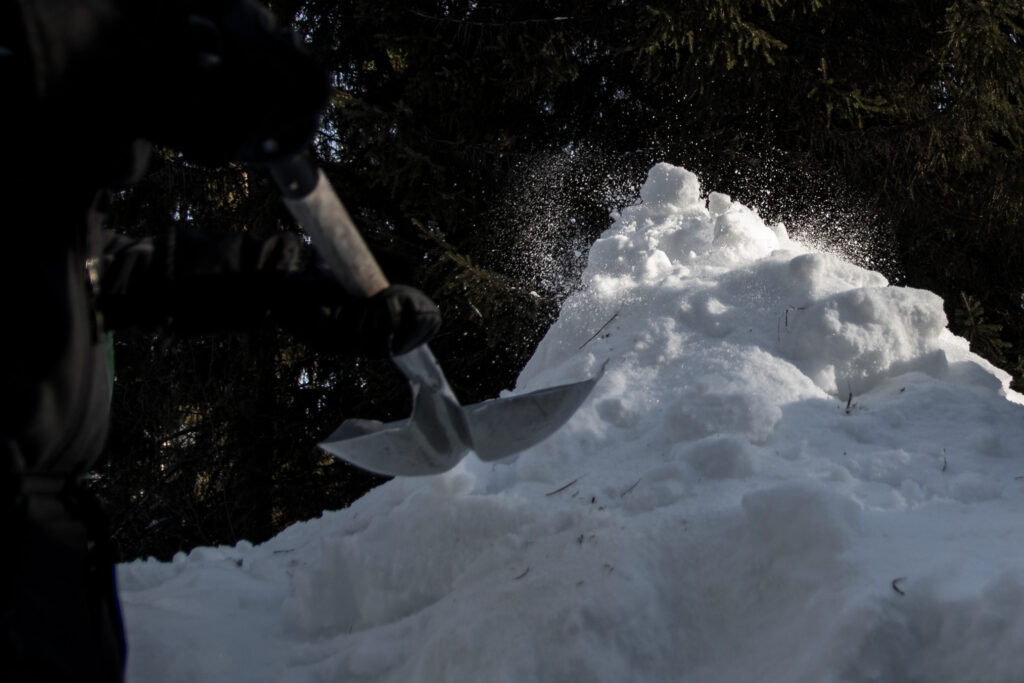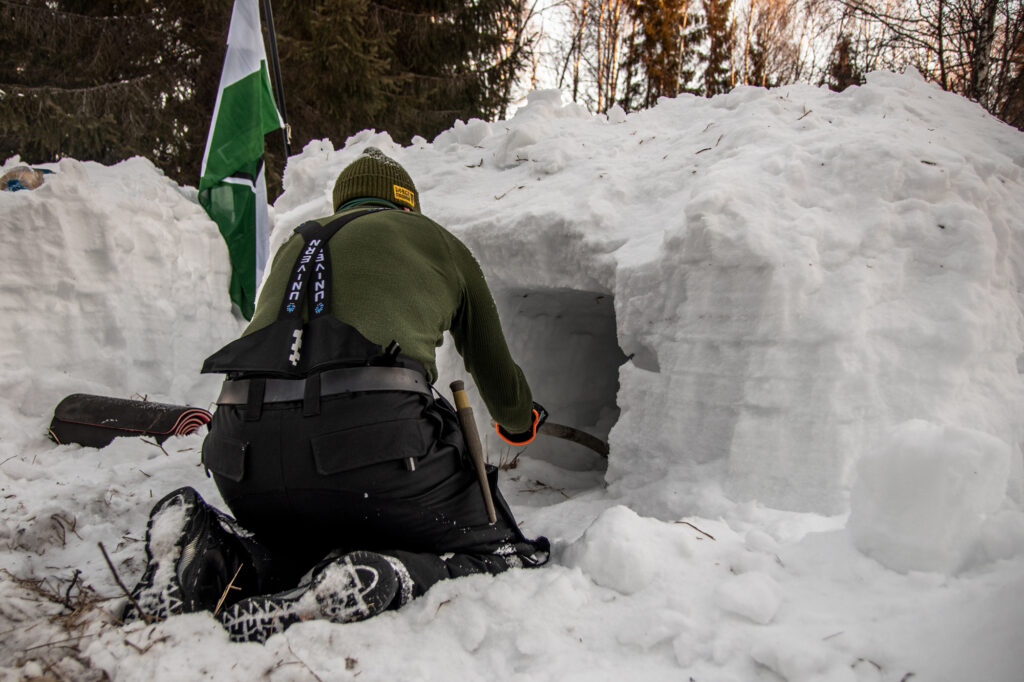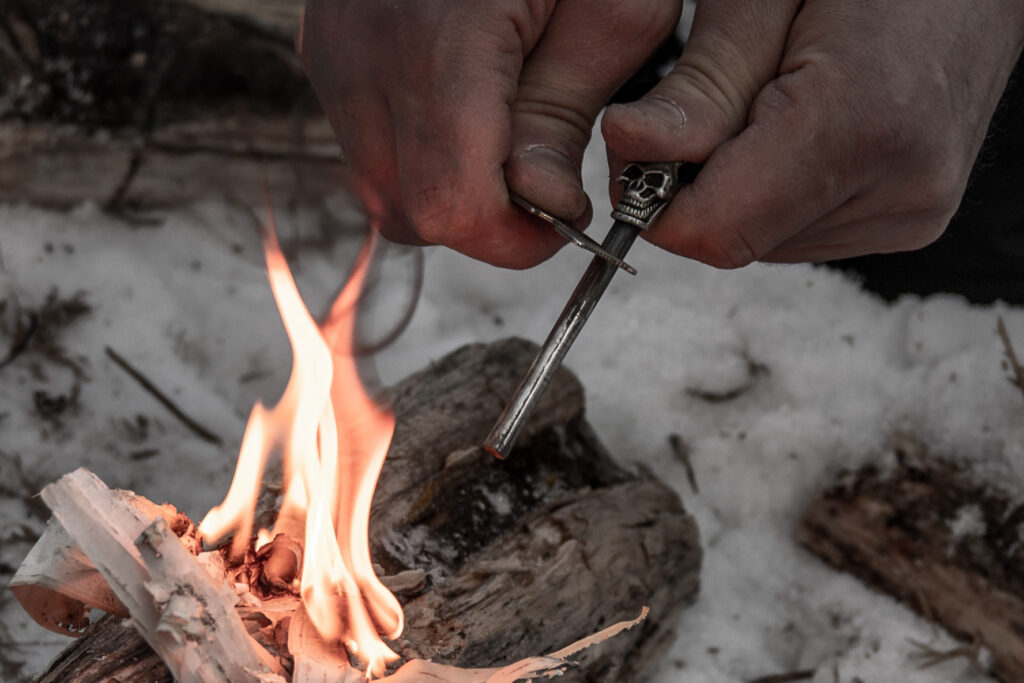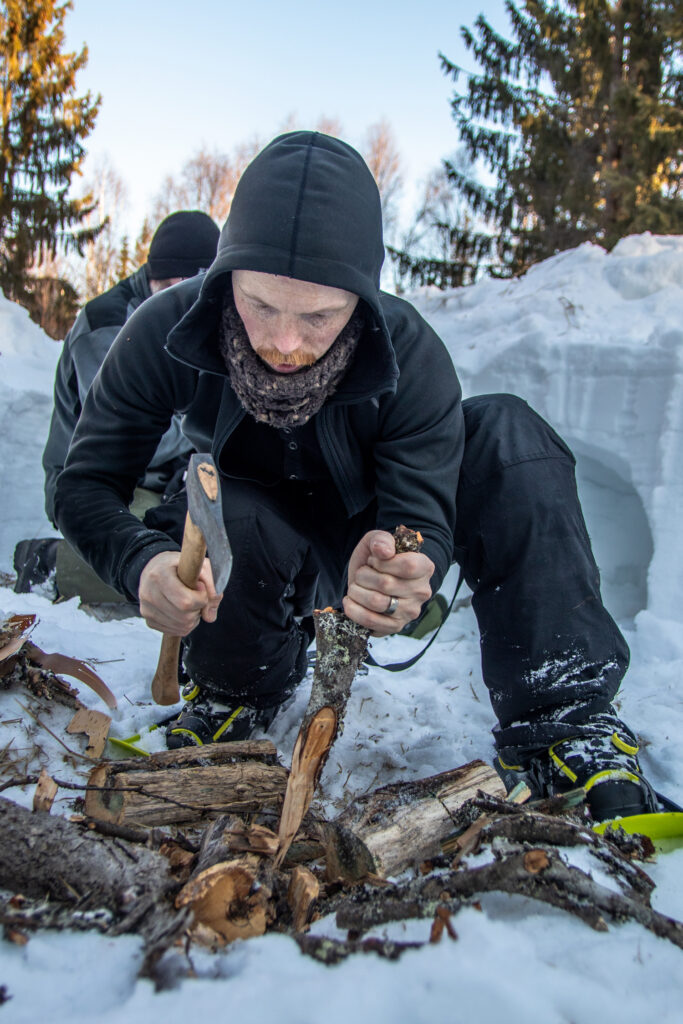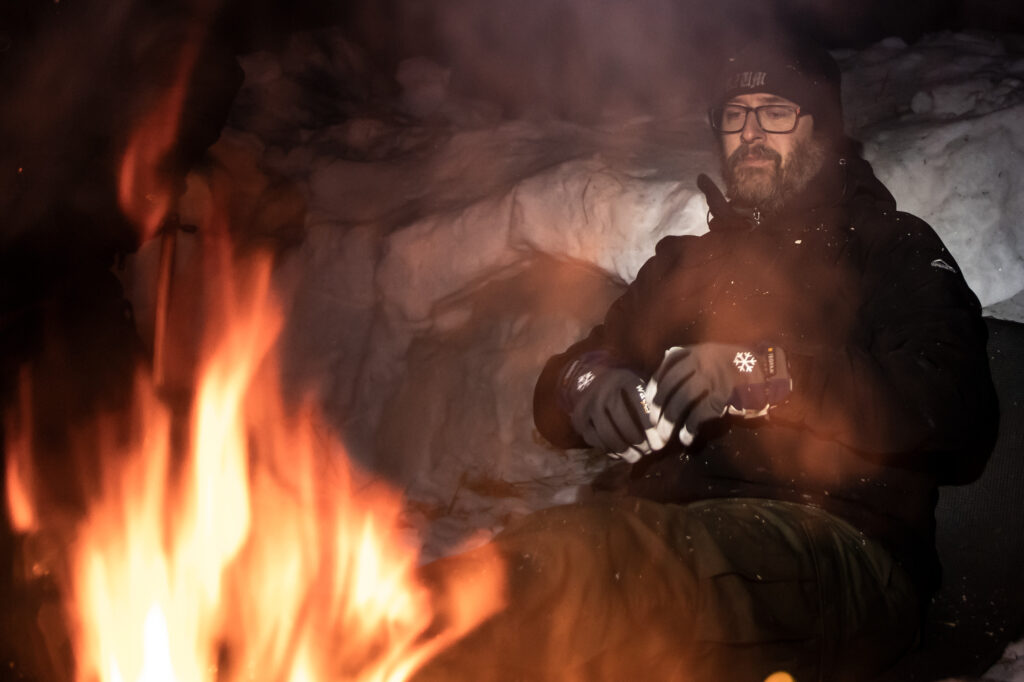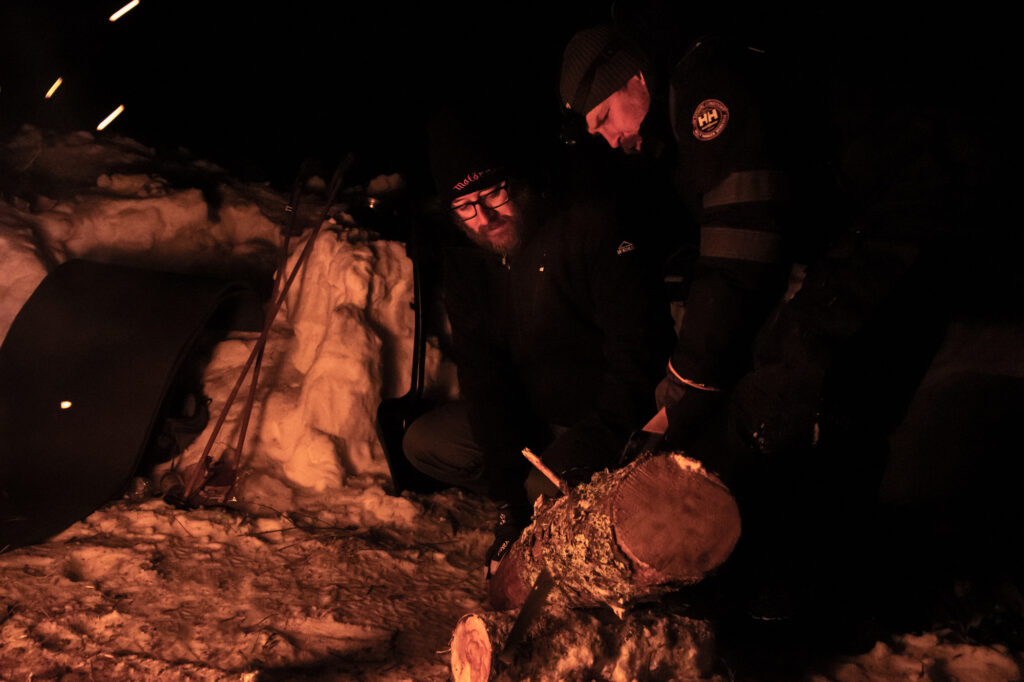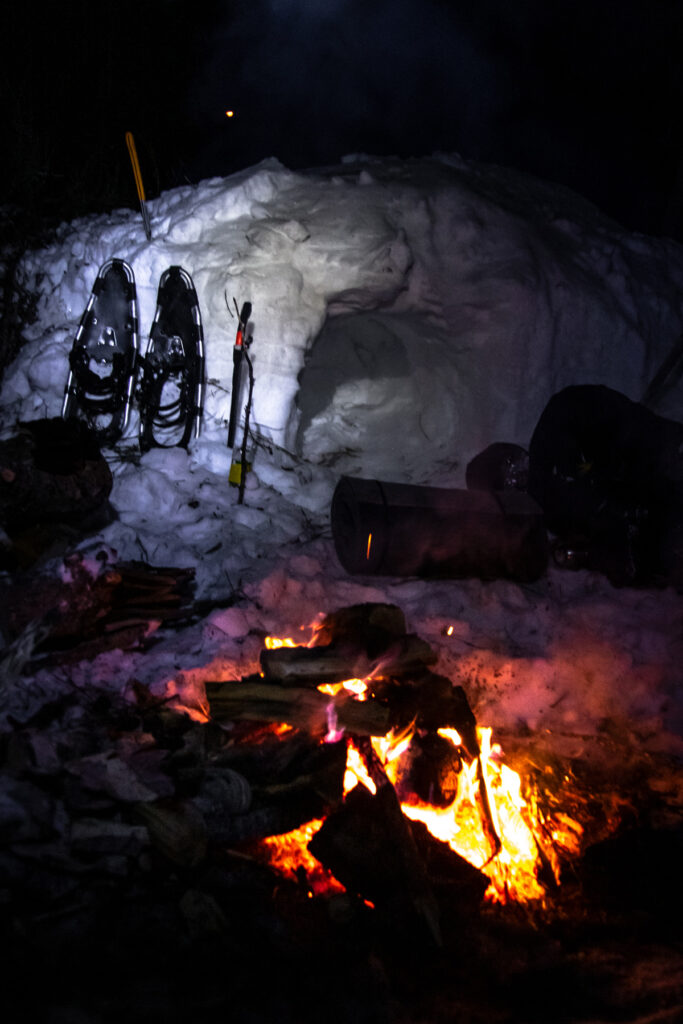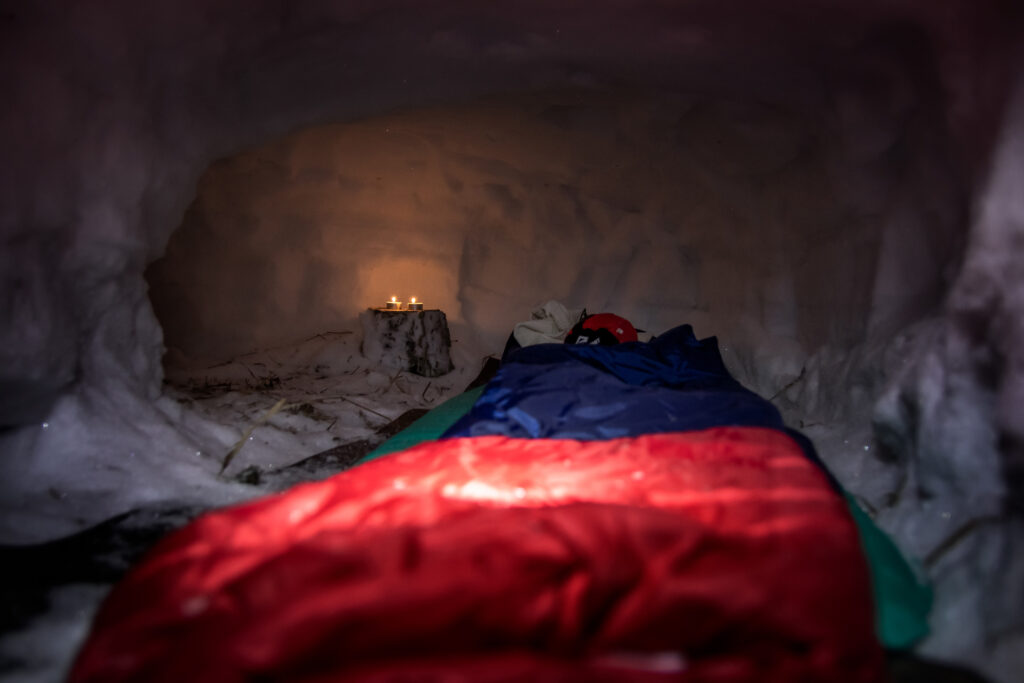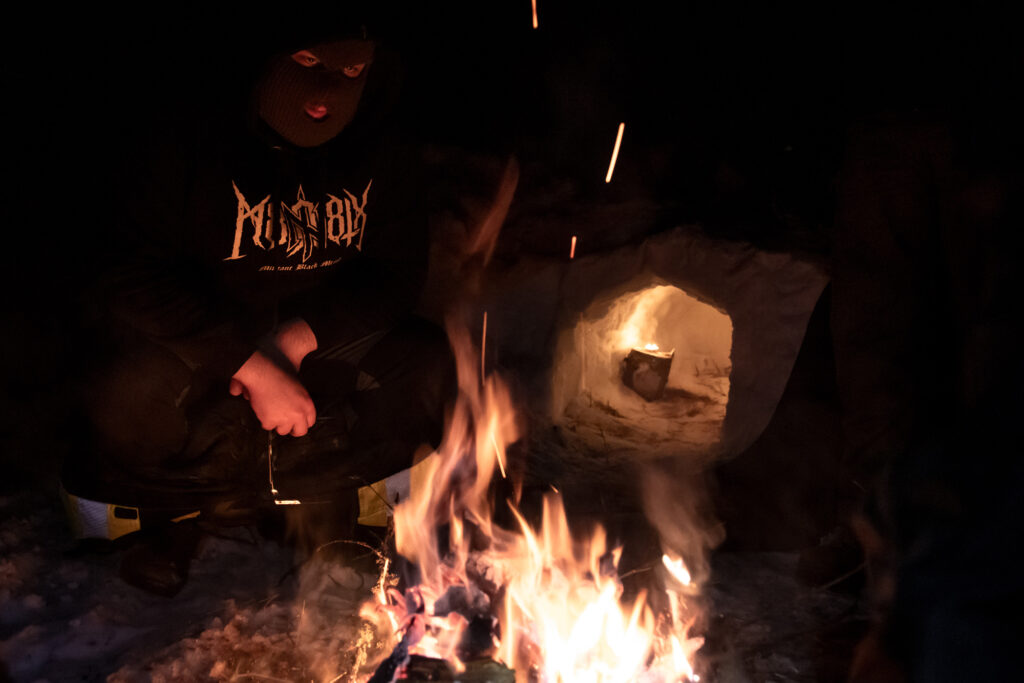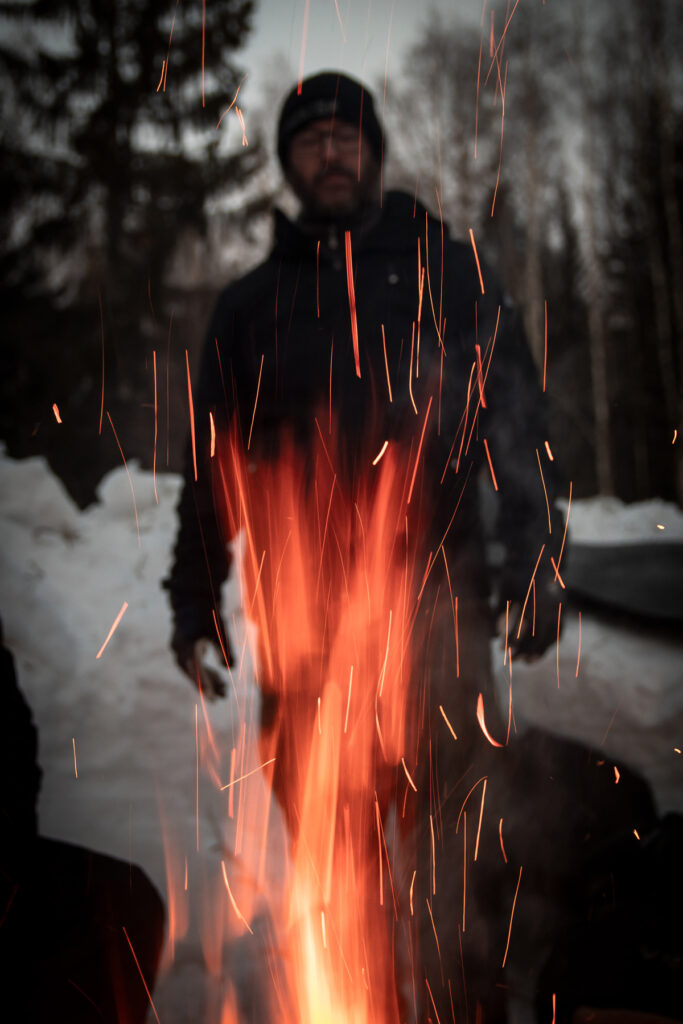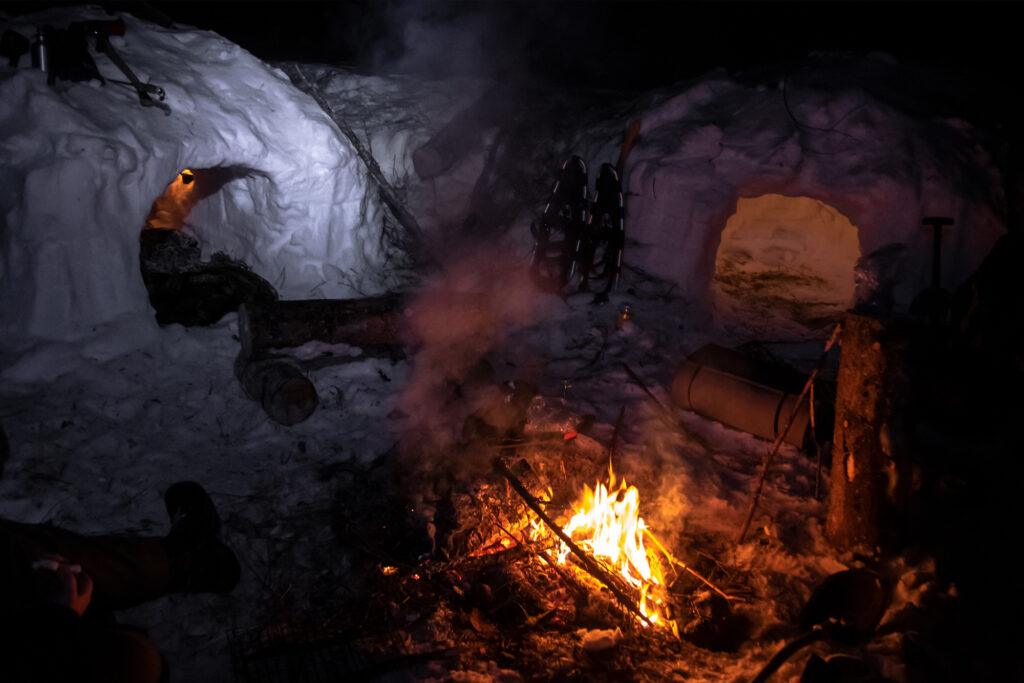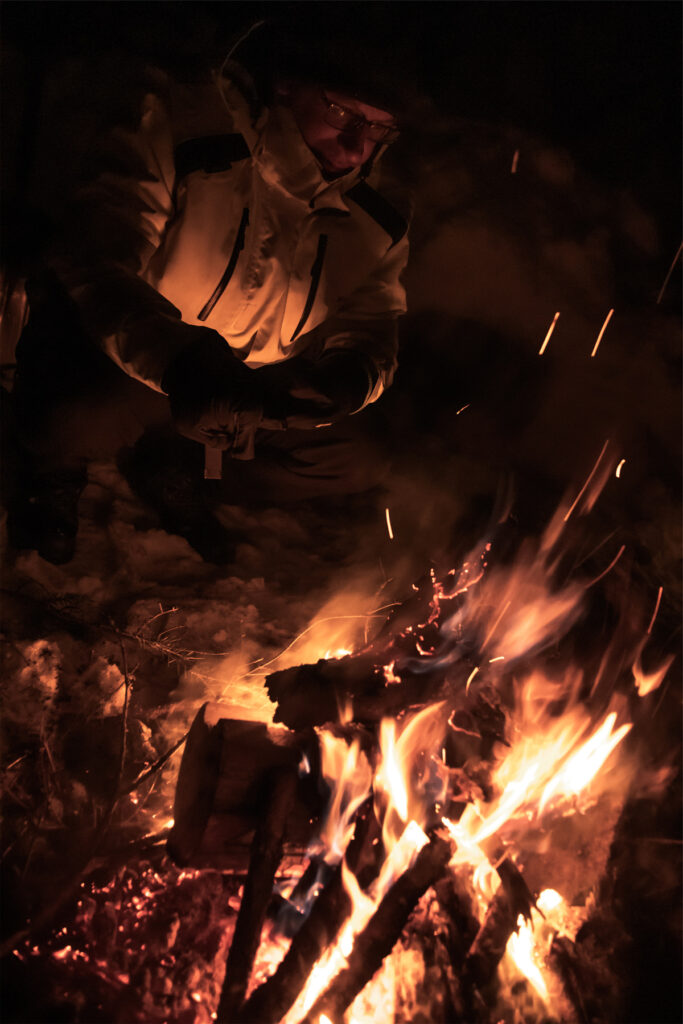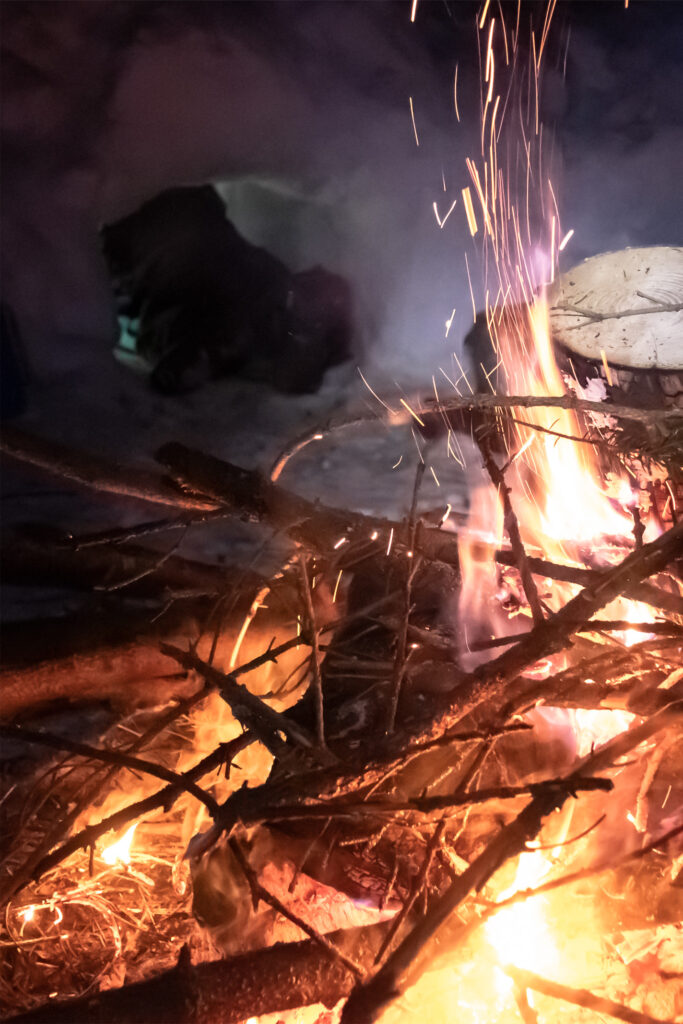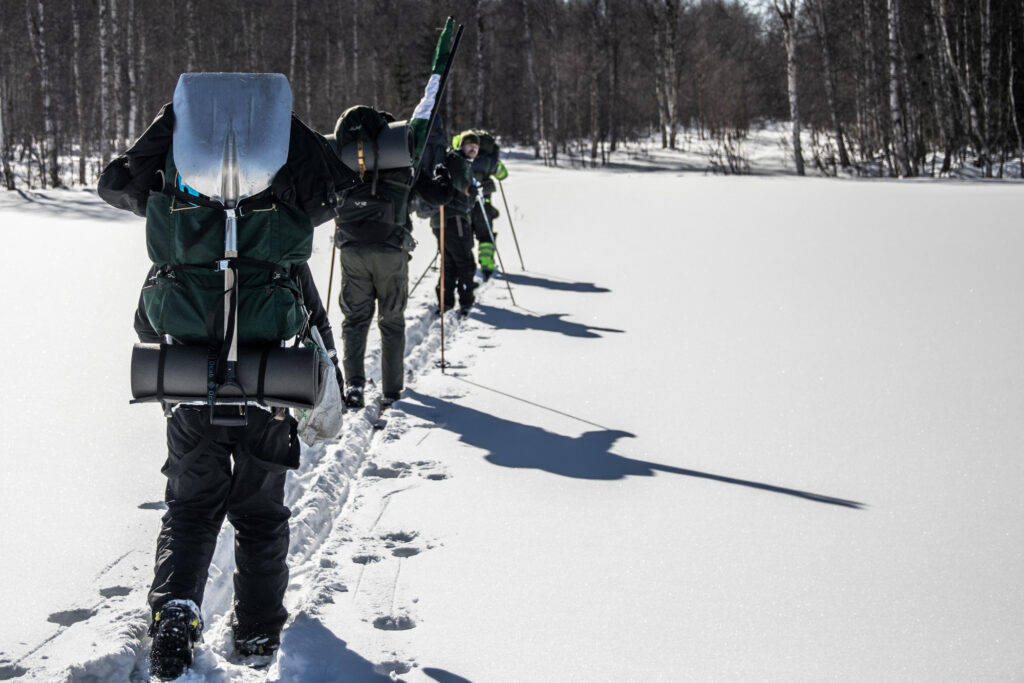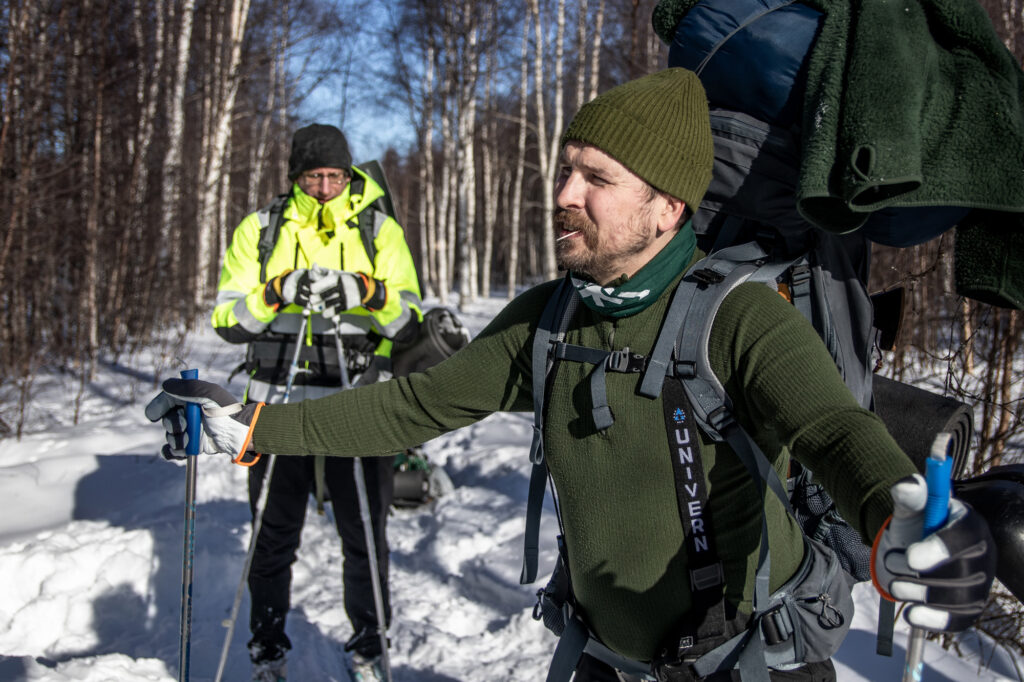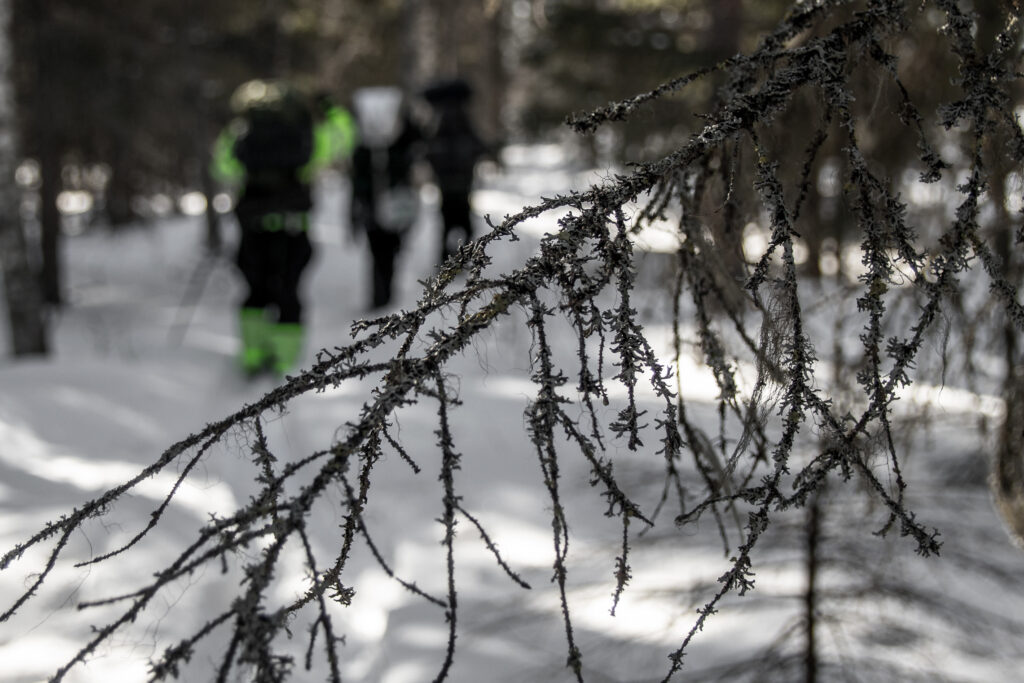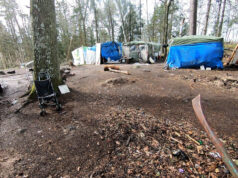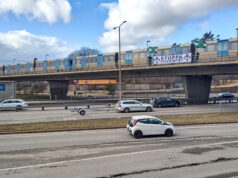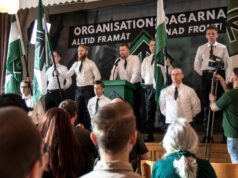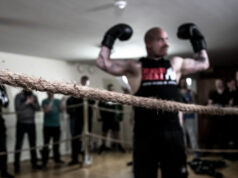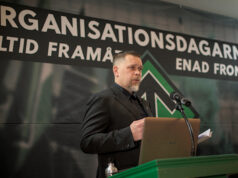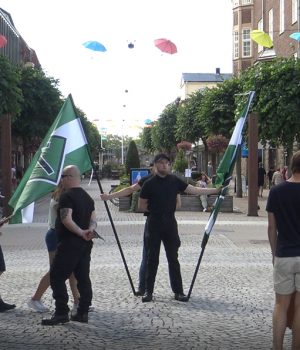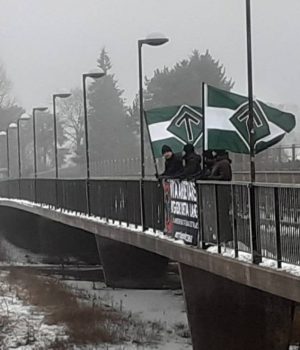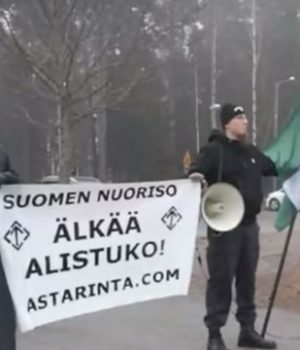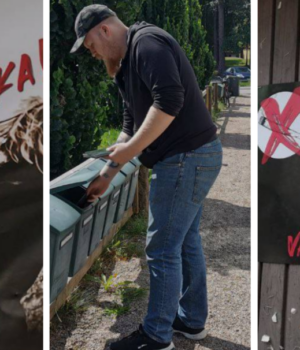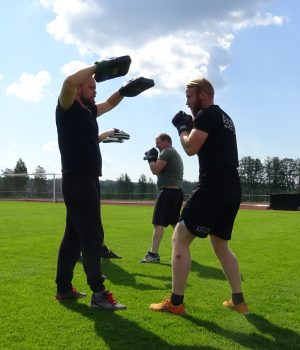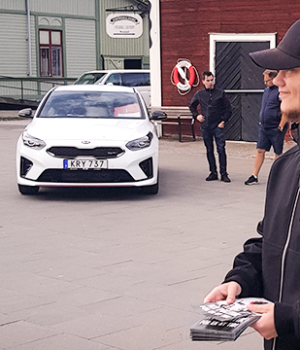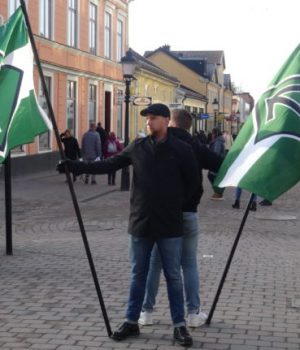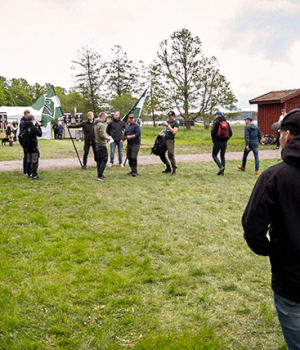WILDERNESS ACTIVITY. Members and activists from Sweden’s Nest 6 gathered for a tough wilderness activity on Saturday 25 March.
The group met early in the day at a comrade’s farm outside Luleå, which would serve as the starting point for the activity. The plan was to ski-walk across wild terrain through the forest and then find a suitable spot for building bivouacs. Those who didn’t have skis strapped on snowshoes instead. Meanwhile, members living farther south in the Nest went on a more easygoing day trip in their local area.
Initially the weather was very pleasant, with the ski trip enjoying brilliant sunshine. At times it was quite difficult to push through the deep snow, and minor mishaps occurred, like tripping over concealed branches and getting ski straps tangled, but overall everything went pretty smoothly.
Eventually the comrades arrived at a suitable open clearing in the forest where they decided to camp. The intention was to construct bivouacs by shovelling up snow into mounds and then digging sleeping caves into the mounds. The snow was shovelled from a central circle, where a campfire would be placed. A very large amount of snow had to be dug out for this purpose, and it was quite a strenuous process that kept everyone warm. By this time it had started getting dark, and the cold was slowly but surely creeping in.
One big problem was that the snow was of an extremely porous powdery quality, which is probably the worst type of snow for cave construction. A couple of comrades learned this the hard way, when their caves collapsed after they had dug them out with great effort.
One comrade had his cave collapse while he was lying in it digging. Luckily, he noticed it was about to collapse and managed to get his upper body out before the snow rushed over him. After this there was some concern among the party that the caves would fall in during the night, so efforts were made to reinforce the snow by thoroughly trampling down the mounds and allowing them to settle before re-digging. After this the caves held very well.
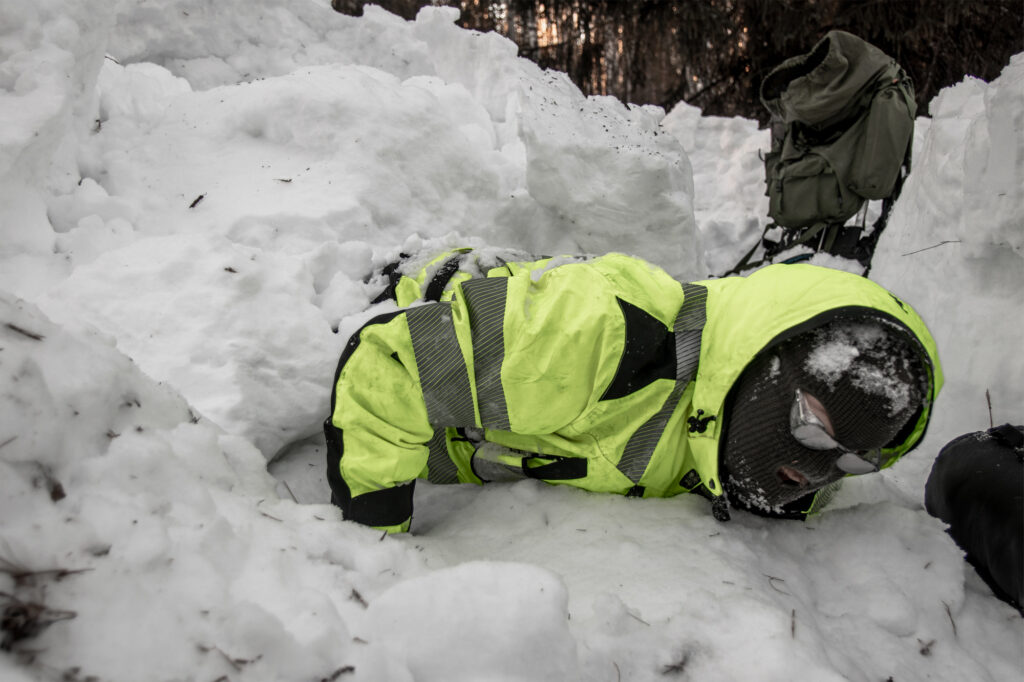
By the time the caves were dug, it had started getting dark, and the cold was really setting in. Now it was time to start a fire. There wasn’t much good firewood in the nearby area, so it took a while before the men got a good fire burning. By this point, some of them had started to freeze, and it was going to get much worse.
Once the fire was lit, it was time to hold a monthly meeting. A large part of the evening was spent keeping the fire going, looking for wood and cooking food. Afterwards, everyone sat around the flames and had interesting conversations. Eventually, some headed off to bed, while others who felt really cold decided to stay beside the fire for a while.
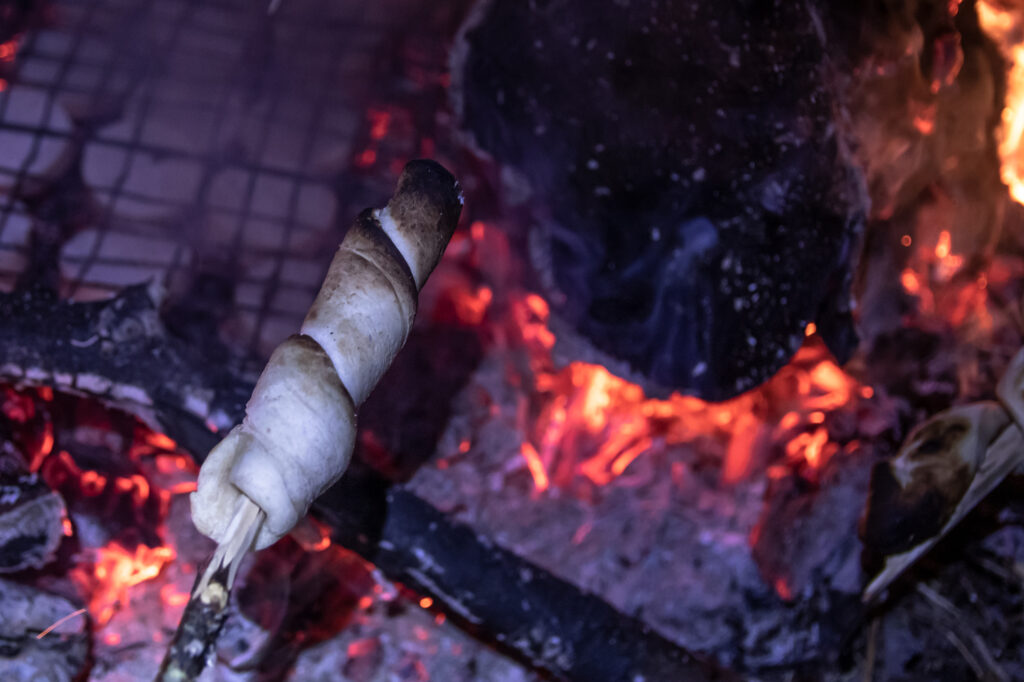
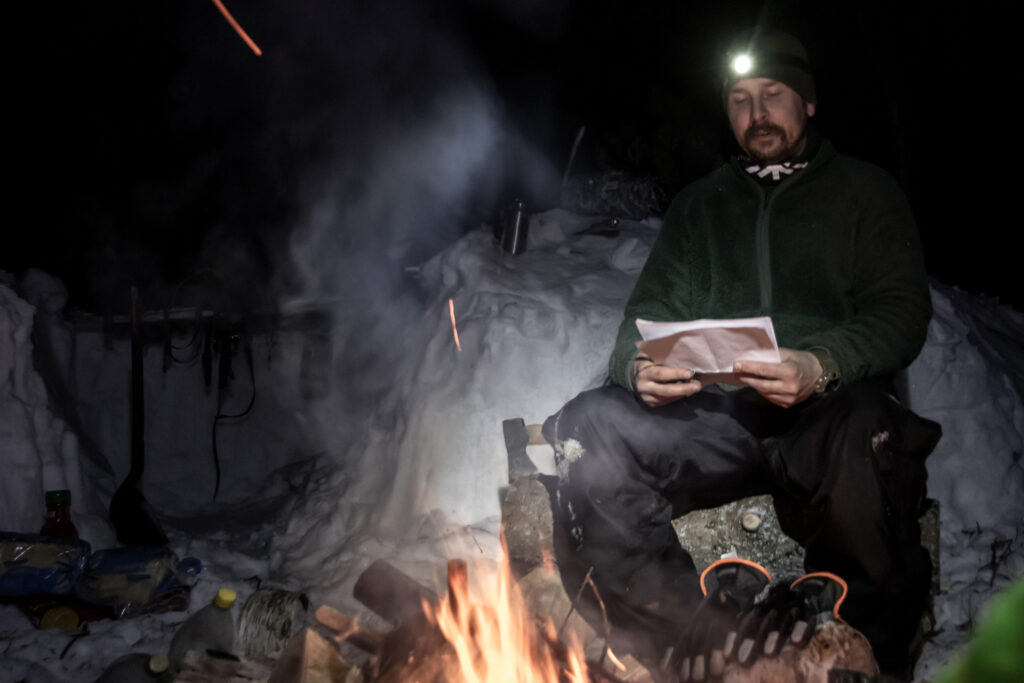
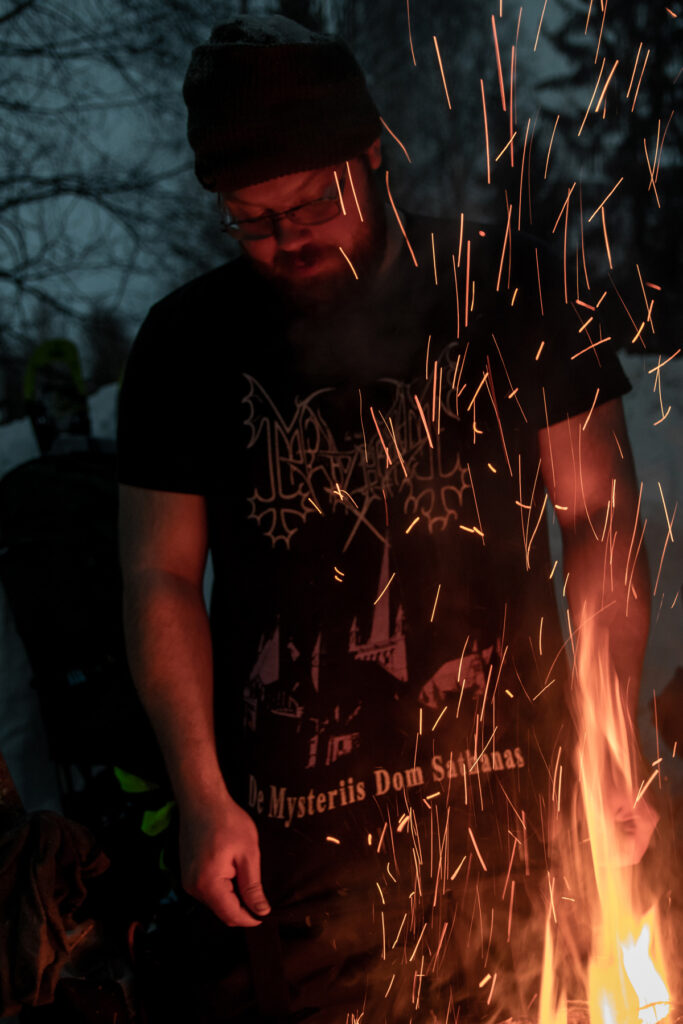
By nightfall the cold had become almost unbearable for the two men who were still up. One of them decided against sleeping in his cave at all and instead chose to stay and keep the fire burning all night. By this time the temperature had dropped so far that even the roaring fire couldn’t prevent the freezing cold from pressing in from around the camp. The men later learned this was the coldest late March weekend in Norrbotten in 100 years.
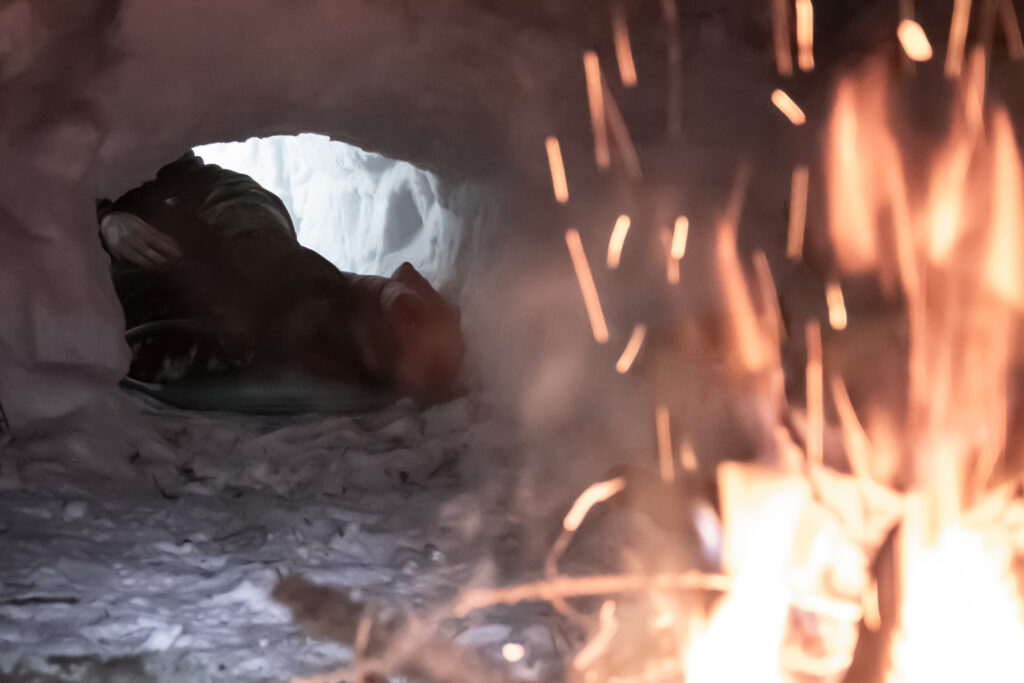
The other man, who eventually chose to try his luck in his sleeping bag in the cave instead of by the fire, hoping it would be warmer, was bitterly disappointed. After lying in the sleeping bag for an hour or so, he froze so much that he was unsure if he would see the following morning. He returned to the fire to spend the rest of the night tormented by the inhospitable weather.
This was a good lesson in the importance of having the right equipment with you and respecting the weather. The comrades who had brought good equipment and warm sleeping bags made it through the night well, while those with poorer equipment tasted the merciless forces of nature. The same applies to checking the weather forecast before setting off. This trip saw weather that was much colder than usual at this time of year, which was evident to all.
Finally, the morning came. The newly awakened party (or at least those who managed to sleep) were able to ascertain that no one had frozen to death and therefore deemed the night successful. The comrades brewed morning coffee and ate a simple breakfast, before packing up, cleaning the site and putting on their skis and snowshoes for the journey home.
The return trip went well, although it was clear that pretty much everyone in the party was exhausted. Finally, they reached the farm and returned to the warmth, satisfied with a successful activity and having endured one of the toughest wilderness trips in a long time.


